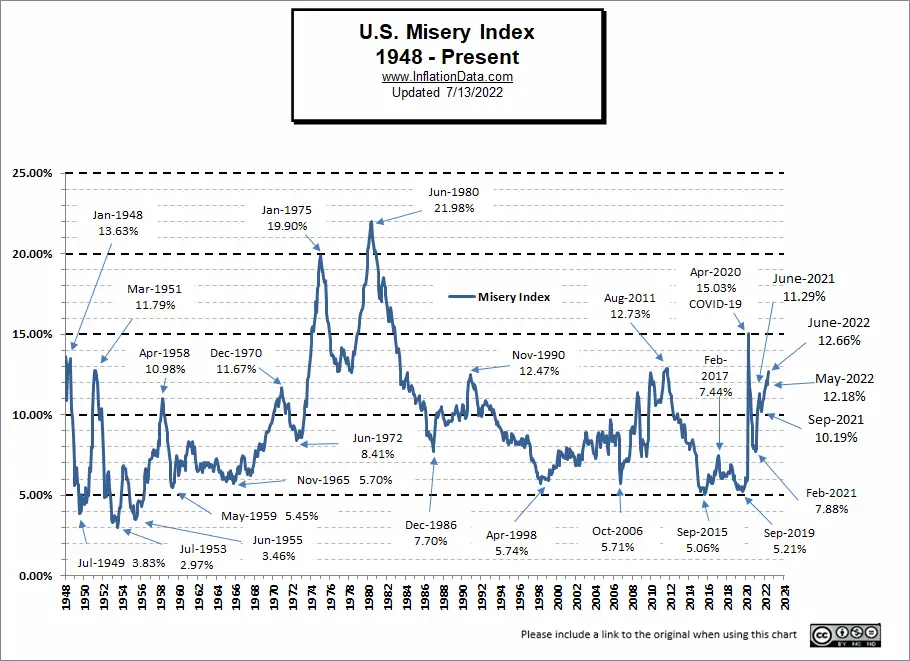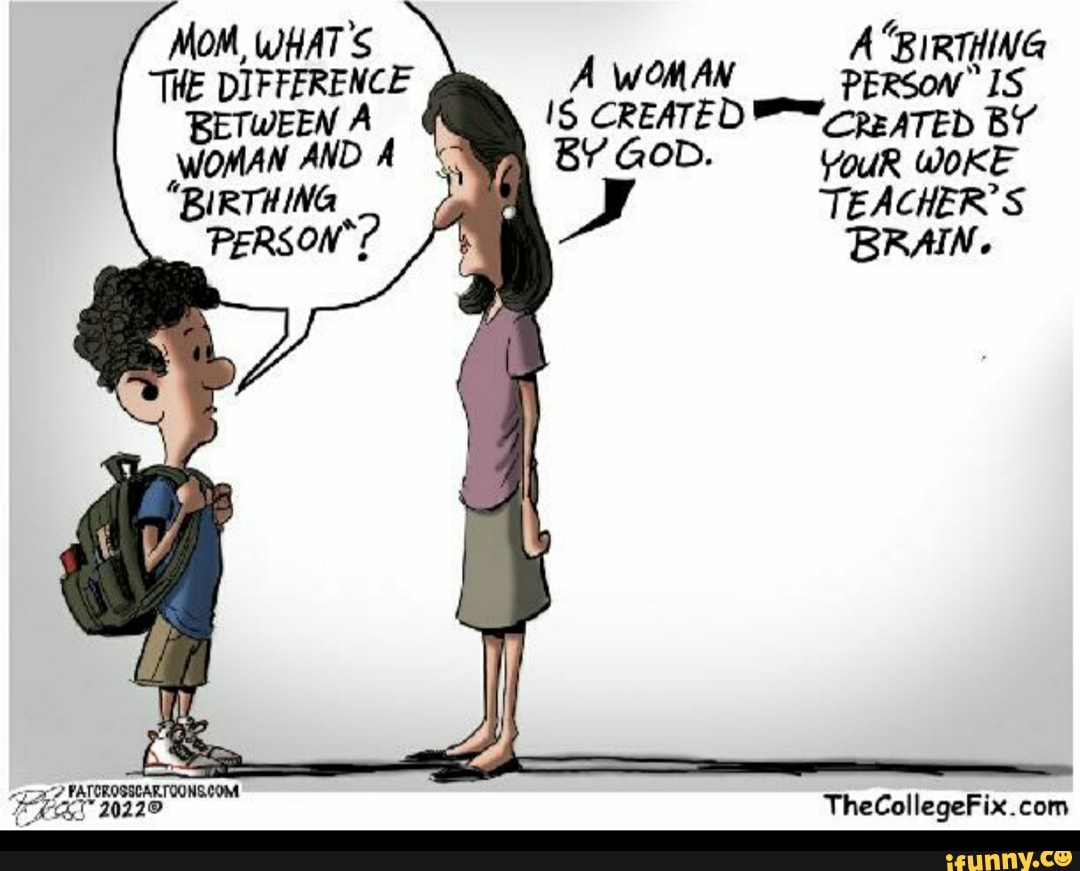Post by Blitz on Jul 30, 2022 13:37:44 GMT -5
Midterm Misery for Biden as Key Economy Gauge Flags 30-Seat Loss
Soaring inflation has pushed the misery index, a measure with a track record of getting elections right, into dangerous territory for Democrats

Joe Biden speaks in the Eisenhower Executive Office Building in Washington, D.C., US, on July 28. Photographer: Oliver Contreras/Bloomberg
ByAndrew Husby, Gregory Korte, Steven T. Dennis, and Eric Fan - July 30, 2022
www.bloomberg.com/news/articles/2022-07-30/midterm-misery-for-biden-as-key-economy-gauge-flags-30-seat-loss?srnd=premium
Whatever else is on Americans’ minds — and that’s a long list right now — the state of the economy looms large in any US election. That spells big trouble for Democrats in November’s midterm vote.
A new study by Bloomberg Economics takes one gauge with a knack of predicting ballot outcomes — the misery index, calculated by adding up the inflation and unemployment rates — and projects it forward through election day.
US Misery Index Chart- Source: Bureau of Labor Statistics, Bloomberg Economics
The result: Based on past voting patterns, President Joe Biden’s party can expect to lose 30 to 40 seats in the House and a few in the Senate too, easily wiping out razor-thin Democratic majorities.
Of course, economics is only one part of the calculation that voters make. Democrats will be hoping that anger over abortion and gun laws and the Jan. 6, 2021 attack on the US Capitol by a right-wing mob will energize their supporters.
There are lots of forecasting models, using all kinds of inputs — not just economic ones — and they’re predicting a range of outcomes. The analysis firm Inside Elections, for example, sees likely Democratic losses in the House at between 12 and 30 seats. Others indicate anything from a wash, with both parties ending up roughly where they started, to GOP gains of 45 seats or more.
Another Shellacking?
Still, the consensus is that Democrats face an uphill battle. On most days lately, there’s enough in the economic headlines to suggest that a reverse for the incumbent party is all but baked-in.
Last week, the Federal Reserve delivered its biggest back-to-back interest-rate hikes since the early 1980s, as it seeks to tame soaring prices by squeezing consumers and homebuyers. And the government reported that the US economy has in fact been shrinking since the start of this year, cueing a partisan row in Washington about whether the country is already in a recession.
Officially, it probably isn’t — partly because it’s still creating plenty of jobs. Low unemployment, and an abundance of open positions, will be the Democrats’ strongest talking point on the economy in the coming campaign.
It’s the other component of the misery index that’s causing their problems, and making many Americans feel like they’re already battling through some kind of slump.
Inflation hit a 40-year high of 9.1% in June, taking the misery index to 12.7%. It likely won’t decline all that much before Americans go to the polls.
Bloomberg Economics projects an index reading at 12% in October. Take away the worst months of the pandemic crisis in early 2020, and that’s close to the highest levels seen for a decade and more -– rivaling the aftermath of the Great Recession, when unemployment hit 10% and Democrats got what then-President Barack Obama called a “shellacking’” in the midterms.
‘Difficult to Interpret’
Since then, the once-in-a-generation upheaval of Covid-19 has led some analysts to question the predictive power of economy-based models.
“It’s very difficult to interpret economic numbers right now,” says Larry Bartels of Vanderbilt University. “In the 2020 presidential election, the huge run-up in income due to the pandemic stimulus implied a Trump landslide, whereas the huge decline in GDP implied a wipe-out. Obviously, the truth was somewhere in between.”
President's Party Rarely Gains Seats in Midterms

Since the Civil War, the party of the incumbent president has lost an average of 33 seats in mid-cycle House elections
The latest so-called generic polling, which strips out the specifics of individual contests, isn’t disastrous for Democrats. They lag the GOP by less than one percentage point in the RealClearPolitics average, compared with a 4-point gap six months ago.
Those nationwide numbers are hard to translate into seats, because of quirks in the electoral map including the reshuffling of congressional seats after the 2020 census. They do suggest that Democrats may fare better than the misery index would predict, helping Biden to push back against the idea that the party needs a different presidential candidate in 2024.
‘Genuine Misery’

Still, the index has a decent track record since it was coined by President Lyndon Johnson’s adviser Arthur Okun in the 1960s. It flagged a window of opportunity for Donald Trump in 2016, and a Biden victory four years later.
The misery index is a powerful predictor because it’s based on things that touch everyone, says Frank Luntz, a pollster who has often helped to craft Republican talking points on economic issues.
“The reason why the misery index still matters is that it's really genuine misery for so many Americans,” Luntz says. “Food and fuel inflation is so high and so universal, and impacts every voter in every community in every state.”
The state-level numbers also make gloomy reading for Democrats. Some key battlegrounds like Ohio and Nevada have misery indexes higher than the national version.
Misery By State

New Hampshire is the only US state where the misery index -- the combination of inflation and unemployment -- is below 10%
Source: Bureau of Labor Statistics, Bloomberg calculations
Note: June data. Inflation component is by region, not state
In Nevada, the GOP has a chance for a comeback in a state Trump narrowly lost twice. There’s a key tossup Senate race between incumbent Catherine Cortez Masto and her Republican challenger Adam Laxalt, as well as several competitive House contests.
The current House has 220 Democrats to 211 Republicans — which means a shift in just a handful of seats could deliver a GOP majority — while the Senate is split 50-50.
‘Can’t Afford My Rent’
Inflation-induced misery is top of mind for Nevada voters, with plenty seeing Biden as the culprit — though there’s also some sympathy for the Democratic argument that price-gouging by oil companies or landlords is partly to blame.
The soaring cost of housing is hitting especially hard. “I just got a raise and I still can’t afford my rent,” says Sierra Farley, a 31-year-old single mother of two, who says she’ll have to move out of her rental home in the Las Vegas suburb of Summerlin by the end of August. “It’s going up $450 a month.” Farley, like many other Nevadans, says she hasn’t yet started focusing on the election and doesn’t know who she’ll vote for in November.
By then, Biden’s Democrats should have more economic achievements under their belt. Last week’s surprise deal on a spending and tax bill with Senator Joe Manchin, who’d been blocking the package, gives the party a chance to show it can deliver on key issues like lowering prescription-drug prices and expanding energy production.
Democrats have sought to pin the blame for inflation on Russia’s invasion of Ukraine, which pushed energy and food prices up, while Republicans have pointed to the pandemic stimulus that Biden greenlighted soon after taking office.
‘Not Abstraction’
Representative Gwen Moore of Wisconsin, another swing state, has been among the most vocal Democrats in confronting the misery index argument head-on. She says the party should stop arguing about definitions of a recession, remind voters of the Democratic-led programs that helped get them through the pandemic, acknowledge today’s economic pain -- and explain how they'll make it better.
“People are experiencing this. This is not abstraction for those folks,” Moore says. “When they pull up to the gas pump, the grocery store, they're experiencing their own personal depression or recession, no matter what the numbers are.”
Gasoline has been falling for more than a month, offering a bit of relief — but other prices, notably for food and rent, are still climbing at a rapid clip, pushing the misery index higher.
There are also some variations by region that help explain why views of the economy are so much more negative among Republicans. The misery index is rising faster in red states than in blue ones. That’s because of the different trajectories that local economies have followed in the pandemic.
Rent Inflation by Region

The cost of rented housing has been rising faster in the GOP-leaning South than in the Democrat-friendly Northeast
Source: Bureau of Labor Statistics
Back in its early days in 2020, lockdowns in red states were generally less stringent, so those areas had a smaller increase in unemployment. It was blue states that had higher jobless rates — and so higher misery-index readings.
This year, it’s inflation rather than unemployment that’s driving the index up -- and outsize rent increases mean many red states, as well as battlegrounds like Nevada, are seeing a steeper climb in the cost of living.
Adding to the risks for Democrats, most analysts reckon a misery index driven by high prices — like it is now — is worse news for political incumbents than one pushed higher by the unemployment rate.
While some people lose their jobs in a downturn, and even more worry that it could happen to them, pretty much every American feels the pinch of inflation.
“When everyone is affected,” says Luntz, the pollster, “the electoral impact is compounded.”
Soaring inflation has pushed the misery index, a measure with a track record of getting elections right, into dangerous territory for Democrats

Joe Biden speaks in the Eisenhower Executive Office Building in Washington, D.C., US, on July 28. Photographer: Oliver Contreras/Bloomberg
ByAndrew Husby, Gregory Korte, Steven T. Dennis, and Eric Fan - July 30, 2022
www.bloomberg.com/news/articles/2022-07-30/midterm-misery-for-biden-as-key-economy-gauge-flags-30-seat-loss?srnd=premium
Whatever else is on Americans’ minds — and that’s a long list right now — the state of the economy looms large in any US election. That spells big trouble for Democrats in November’s midterm vote.
A new study by Bloomberg Economics takes one gauge with a knack of predicting ballot outcomes — the misery index, calculated by adding up the inflation and unemployment rates — and projects it forward through election day.
US Misery Index Chart- Source: Bureau of Labor Statistics, Bloomberg Economics
The result: Based on past voting patterns, President Joe Biden’s party can expect to lose 30 to 40 seats in the House and a few in the Senate too, easily wiping out razor-thin Democratic majorities.
Of course, economics is only one part of the calculation that voters make. Democrats will be hoping that anger over abortion and gun laws and the Jan. 6, 2021 attack on the US Capitol by a right-wing mob will energize their supporters.
There are lots of forecasting models, using all kinds of inputs — not just economic ones — and they’re predicting a range of outcomes. The analysis firm Inside Elections, for example, sees likely Democratic losses in the House at between 12 and 30 seats. Others indicate anything from a wash, with both parties ending up roughly where they started, to GOP gains of 45 seats or more.
Another Shellacking?
Still, the consensus is that Democrats face an uphill battle. On most days lately, there’s enough in the economic headlines to suggest that a reverse for the incumbent party is all but baked-in.
Last week, the Federal Reserve delivered its biggest back-to-back interest-rate hikes since the early 1980s, as it seeks to tame soaring prices by squeezing consumers and homebuyers. And the government reported that the US economy has in fact been shrinking since the start of this year, cueing a partisan row in Washington about whether the country is already in a recession.
Officially, it probably isn’t — partly because it’s still creating plenty of jobs. Low unemployment, and an abundance of open positions, will be the Democrats’ strongest talking point on the economy in the coming campaign.
It’s the other component of the misery index that’s causing their problems, and making many Americans feel like they’re already battling through some kind of slump.
Inflation hit a 40-year high of 9.1% in June, taking the misery index to 12.7%. It likely won’t decline all that much before Americans go to the polls.
Bloomberg Economics projects an index reading at 12% in October. Take away the worst months of the pandemic crisis in early 2020, and that’s close to the highest levels seen for a decade and more -– rivaling the aftermath of the Great Recession, when unemployment hit 10% and Democrats got what then-President Barack Obama called a “shellacking’” in the midterms.
‘Difficult to Interpret’
Since then, the once-in-a-generation upheaval of Covid-19 has led some analysts to question the predictive power of economy-based models.
“It’s very difficult to interpret economic numbers right now,” says Larry Bartels of Vanderbilt University. “In the 2020 presidential election, the huge run-up in income due to the pandemic stimulus implied a Trump landslide, whereas the huge decline in GDP implied a wipe-out. Obviously, the truth was somewhere in between.”
President's Party Rarely Gains Seats in Midterms

Since the Civil War, the party of the incumbent president has lost an average of 33 seats in mid-cycle House elections
The latest so-called generic polling, which strips out the specifics of individual contests, isn’t disastrous for Democrats. They lag the GOP by less than one percentage point in the RealClearPolitics average, compared with a 4-point gap six months ago.
Those nationwide numbers are hard to translate into seats, because of quirks in the electoral map including the reshuffling of congressional seats after the 2020 census. They do suggest that Democrats may fare better than the misery index would predict, helping Biden to push back against the idea that the party needs a different presidential candidate in 2024.
‘Genuine Misery’

Still, the index has a decent track record since it was coined by President Lyndon Johnson’s adviser Arthur Okun in the 1960s. It flagged a window of opportunity for Donald Trump in 2016, and a Biden victory four years later.
The misery index is a powerful predictor because it’s based on things that touch everyone, says Frank Luntz, a pollster who has often helped to craft Republican talking points on economic issues.
“The reason why the misery index still matters is that it's really genuine misery for so many Americans,” Luntz says. “Food and fuel inflation is so high and so universal, and impacts every voter in every community in every state.”
The state-level numbers also make gloomy reading for Democrats. Some key battlegrounds like Ohio and Nevada have misery indexes higher than the national version.
Misery By State

New Hampshire is the only US state where the misery index -- the combination of inflation and unemployment -- is below 10%
Source: Bureau of Labor Statistics, Bloomberg calculations
Note: June data. Inflation component is by region, not state
In Nevada, the GOP has a chance for a comeback in a state Trump narrowly lost twice. There’s a key tossup Senate race between incumbent Catherine Cortez Masto and her Republican challenger Adam Laxalt, as well as several competitive House contests.
The current House has 220 Democrats to 211 Republicans — which means a shift in just a handful of seats could deliver a GOP majority — while the Senate is split 50-50.
‘Can’t Afford My Rent’
Inflation-induced misery is top of mind for Nevada voters, with plenty seeing Biden as the culprit — though there’s also some sympathy for the Democratic argument that price-gouging by oil companies or landlords is partly to blame.
The soaring cost of housing is hitting especially hard. “I just got a raise and I still can’t afford my rent,” says Sierra Farley, a 31-year-old single mother of two, who says she’ll have to move out of her rental home in the Las Vegas suburb of Summerlin by the end of August. “It’s going up $450 a month.” Farley, like many other Nevadans, says she hasn’t yet started focusing on the election and doesn’t know who she’ll vote for in November.
By then, Biden’s Democrats should have more economic achievements under their belt. Last week’s surprise deal on a spending and tax bill with Senator Joe Manchin, who’d been blocking the package, gives the party a chance to show it can deliver on key issues like lowering prescription-drug prices and expanding energy production.
Democrats have sought to pin the blame for inflation on Russia’s invasion of Ukraine, which pushed energy and food prices up, while Republicans have pointed to the pandemic stimulus that Biden greenlighted soon after taking office.
‘Not Abstraction’
Representative Gwen Moore of Wisconsin, another swing state, has been among the most vocal Democrats in confronting the misery index argument head-on. She says the party should stop arguing about definitions of a recession, remind voters of the Democratic-led programs that helped get them through the pandemic, acknowledge today’s economic pain -- and explain how they'll make it better.
“People are experiencing this. This is not abstraction for those folks,” Moore says. “When they pull up to the gas pump, the grocery store, they're experiencing their own personal depression or recession, no matter what the numbers are.”
Gasoline has been falling for more than a month, offering a bit of relief — but other prices, notably for food and rent, are still climbing at a rapid clip, pushing the misery index higher.
There are also some variations by region that help explain why views of the economy are so much more negative among Republicans. The misery index is rising faster in red states than in blue ones. That’s because of the different trajectories that local economies have followed in the pandemic.
Rent Inflation by Region

The cost of rented housing has been rising faster in the GOP-leaning South than in the Democrat-friendly Northeast
Source: Bureau of Labor Statistics
Back in its early days in 2020, lockdowns in red states were generally less stringent, so those areas had a smaller increase in unemployment. It was blue states that had higher jobless rates — and so higher misery-index readings.
This year, it’s inflation rather than unemployment that’s driving the index up -- and outsize rent increases mean many red states, as well as battlegrounds like Nevada, are seeing a steeper climb in the cost of living.
Adding to the risks for Democrats, most analysts reckon a misery index driven by high prices — like it is now — is worse news for political incumbents than one pushed higher by the unemployment rate.
While some people lose their jobs in a downturn, and even more worry that it could happen to them, pretty much every American feels the pinch of inflation.
“When everyone is affected,” says Luntz, the pollster, “the electoral impact is compounded.”








